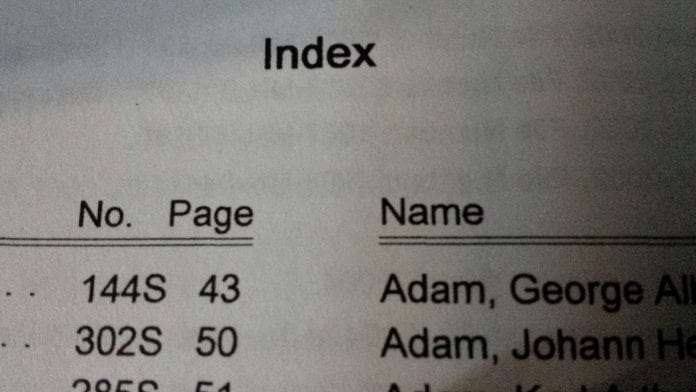Strategies for using indexes in your genealogical research

r Let’s talk about strategies for using indexes in your genealogical research.
First, you must understand how indexes are created. The record is created by someone who may not be literate, who may be recording only what they hear, or may not speak the language in which the record is stated or recorded. This can result in misspellings, the wrong record being created, incorrect dates and places or even no records being created at all! Next, someone has to transcribe that information and organize it. Mis-interpretations of handwriting during this process can result in huge errors in names and dates. Once the index is created, it can be transcribed again to make a typed or printed index, which is subject to the transcriber’s understanding of the of the handwritten index. Many errors occur during this process.
Next, someone has to transcribe that information and organize it. Misinterpretations of handwriting during this process can result in huge errors in names and dates. Once the index is created, it can be transcribed again to make a typed or printed index, which is subject to the transcriber’s understanding of the of the handwritten index. Many errors occur during this process.
The Soundex system was developed to help overcome misspellings. Using the Soundex and your fertile imagination, spell the name you’re looking for in as many ways as you possibly can…I guarantee that someone, somewhere, recorded your ancestors under every single one of those spellings! For example, Kane can be spelled Kain, Cane, Cain, Cayne, Kayne or even Kaine/Caine.
Once you have a list of possible spellings you can begin a comprehensive search of indexes. For articles on using the Soundex and for some online Soundex converters try these websites: http://resources.rootsweb.ancestry.com/cgi-bin/soundexconverter, https://www.stevemorse.org/census/soundex.html, https://www.familysearch.org/wiki/en/Soundex.
With so many genealogical records being indexed online, here are some additional hints to search them effectively. Find what symbol the website uses for a wild card. Most use the “*” or asterisk. If you have a name with multiple spellings use the symbol in place of letters that could vary. Jensen, Jenson, Jensson, and Jennsen are all variations of the same name.
To search for them all at them same time, use Jen*n. If you have a name such as Hutchinson you could use Hutch*ns*n and several variations of the name will show up including Hutchensen, Hutchinsen and Hutchenson.
In handwriting, several letters look similar and may have been indexed incorrectly. F is mistaken for T, S is mistaken for L and T, A can be seen as H, I and J look alike, and Q and O are similar. So check the indexes substituting similar letters as they may have been transcribed that way.
AND ALWAYS, ALWAYS LOOK AT THE ACTUAL RECORD WHEN POSSIBLE! You may be missing out on information not included in the index!






